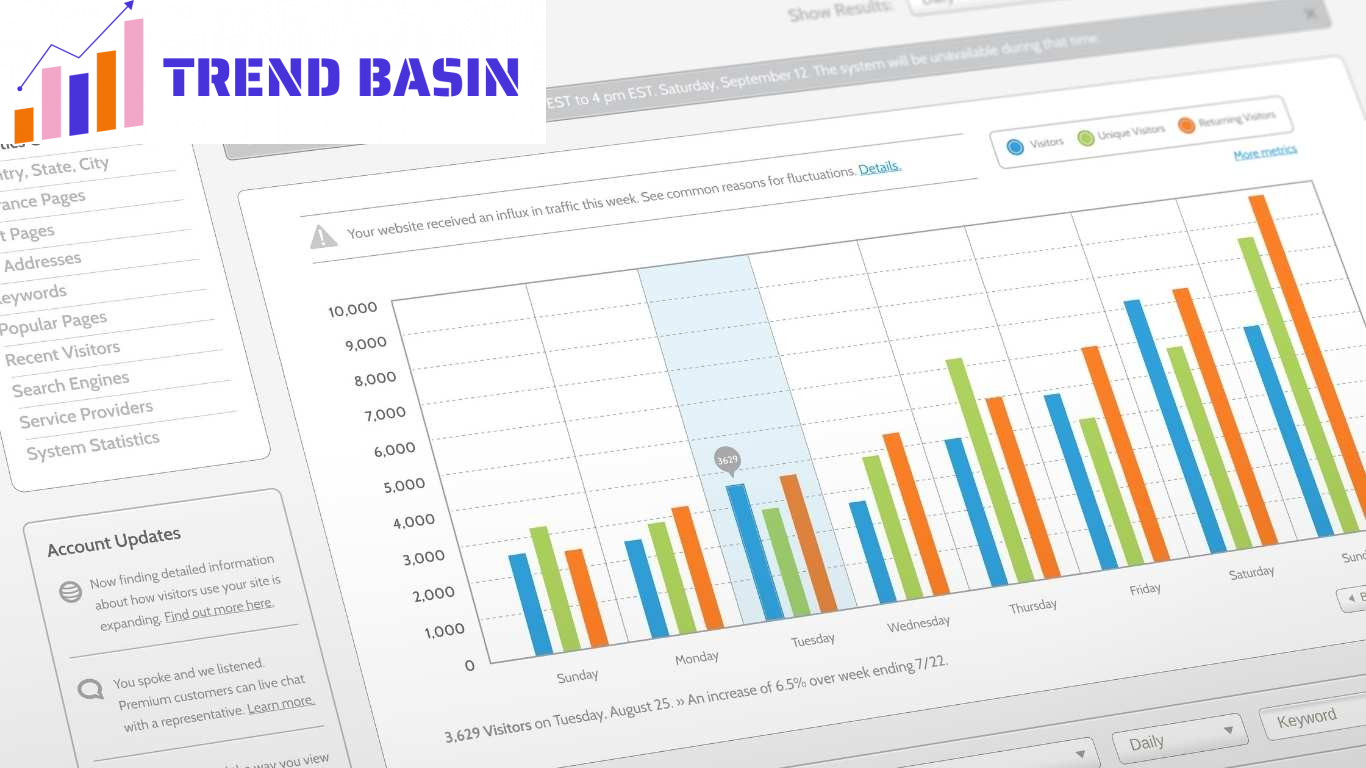Mastering SEO in Singapore: A Comprehensive Guide for Beginners
Looking to boost your online visibility and attract more customers in Singapore? Mastering Search Engine Optimization (SEO) is key.
This comprehensive guide by Trend Basin, a leading web design agency in Singapore specializing in creating stunning and effective websites, will equip you with the knowledge and strategies to elevate your website’s ranking in search results and drive more traffic, ultimately leading to increased leads and sales.
Key Takeaways
- Understanding and utilizing the right keywords is crucial for SEO success.
- On-page SEO, technical SEO, and local SEO are essential components of a robust strategy.
- High-quality content, link building, and ongoing analytics are vital for consistent growth.
- Stay updated on the latest SEO trends to maintain a competitive edge.
1. Why SEO Matters in Singapore
Singapore’s thriving digital landscape presents a unique opportunity and challenge for businesses. With a high internet penetration rate and a tech-savvy population, a strong online presence is no longer optional, it’s a necessity.
A well-optimized website ensures that your business is easily discoverable by potential customers, leading to increased website traffic, brand visibility, and ultimately, higher sales and revenue.
2. Keyword Research: The Foundation of SEO
Keyword research is the cornerstone of any successful SEO strategy. Think of it as understanding the language your target audience uses when searching online.
2.1 What Are Keywords?
These are the words or phrases people type into search engines like Google to find information.
2.2 Why Are Keywords Important?
By strategically incorporating relevant keywords into your website content, you increase the likelihood of your website appearing in the search results for those specific terms.
2.3 Types of Keywords
- Short-tail keywords: These are broad and general terms that have high search volume. They are highly competitive, making it difficult to rank for them, especially for smaller businesses. Example: “restaurants”
- Long-tail keywords: These are longer and more specific phrases that are less competitive. They have lower search volume but attract more targeted traffic with a strong intent to buy or learn. Example: “best vegetarian restaurants in Singapore”
- Local keywords: These include location-specific terms like “Singapore,” “Orchard Road,” or “Jurong East.” They are crucial for attracting customers within your area. Example: “restaurants in Orchard Road”
- Transactional keywords: These indicate a user’s intent to buy a product or service, such as “buy shoes online Singapore” or “book hotel Singapore.”
- Informational keywords: These reflect a user’s need for information or education, such as “best restaurants in Singapore” or “how to get a Singapore visa.”
2.4 Tools for Keyword Research
- Google Keyword Planner: This free tool offers valuable data on search volume, competition, and related keywords.
- Ahrefs: Ahrefs is a paid tool that provides a more comprehensive suite of features including backlink analysis, competitor research, and advanced keyword research.
- SEMrush: SEMrush is another popular paid platform, offering a wide range of tools, including keyword research, content analysis, and competitor tracking.
- Ubersuggest: A free tool that provides keyword ideas, search volume, and competitor analysis.
2.5 Keyword Research Tips
- Understand your target audience: What are their needs, interests, and pain points? What kind of language do they use?
- Use a variety of keyword research tools: Compare data from different sources to get a comprehensive understanding of keyword popularity and competition.
- Identify long-tail keywords: Focus on long-tail keywords that are less competitive but highly relevant to your business.
- Use local keywords: Include location-specific terms to attract customers within your area.
- Analyze your competitors: See what keywords your competitors are ranking for and identify opportunities to target similar or related keywords.
- Check search volume and competition: Select keywords that have a decent search volume and are not overly competitive.
- Group keywords: Organize keywords into relevant themes or categories to create a structured approach to your content strategy.
- Map keywords to pages: Assign specific keywords to different pages on your website to ensure that your content is optimized for relevant search terms.
3. On-Page SEO: Optimizing Your Website Content
On-page SEO involves optimizing the content on your website to make it more attractive to both search engines and users.
3.1 Key Elements of On-Page SEO
- Title Tags: The title tag is the blue clickable headline that appears in search results. It should be concise, descriptive, and include your main keyword. Example: “Best Restaurants in Singapore | Find the Perfect Dining Experience”
- Meta Descriptions: The meta description is a brief summary of your webpage that appears below the title tag in search results. It should be compelling and encourage users to click through. Example: “Discover the top-rated restaurants in Singapore, from fine dining to casual eateries. Find reviews, menus, and booking options.”
- Header Tags (H1, H2, H3): Header tags help structure your content and highlight important information. Use them strategically to include relevant keywords.
- Image Optimization: Optimize your images with alt text (alternative text) that describes the image. This helps search engines understand your images and is beneficial for users with visual impairments. Example: “Image of a delicious plate of Singaporean chicken rice.”
- Internal Linking: Link to other relevant pages on your website to improve navigation and signal to search engines that your site has a well-structured hierarchy. Example: Link from a blog post about “Top Singaporean Foods” to your restaurant menu page.
- Content Optimization for Voice Search: Optimize content for voice search, which is becoming increasingly popular. Users often use more natural language when speaking to voice assistants. Use conversational language and answer questions directly.
- Content Optimization for Mobile Devices: Provide tips on optimizing content for mobile users, as mobile-first indexing is a key trend. Ensure your website is responsive and adapts to different screen sizes.
3.2 On-Page SEO Tips
- Use keywords naturally: Don’t stuff your content with keywords, it will look unnatural and may even harm your rankings.
- Focus on quality content: Create valuable and engaging content that is relevant to your target audience.
- Optimize for readability: Use clear headings, subheadings, bullet points, and short paragraphs to make your content easy to read.
- Update your content regularly: Fresh and updated content signals to search engines that your website is active and relevant.
- Use keyword variations: Instead of using the same keyword repeatedly, use synonyms and related terms to make your content more engaging and relevant to search engines.
4. Technical SEO: Ensuring Your Website is Search Engine Friendly
Technical SEO focuses on the technical aspects of your website that affect how search engines crawl and index your site.
4.1 Key Elements of Technical SEO
- Website Speed: Search engines prioritize websites that load quickly. Use tools like Google PageSpeed Insights to identify opportunities for improvement, such as optimizing images, reducing code, and using a CDN (Content Delivery Network).
- Mobile-Friendliness: With the rise of mobile browsing, Google prioritizes mobile-friendly websites. Make sure your website is responsive and adapts to different screen sizes.
- XML Sitemaps: XML sitemaps help search engines understand the structure of your website and discover all of your pages.
- URL Structure: Use descriptive and user-friendly URLs that include relevant keywords. Example: Instead of “/page123.html,” use “/singapore-restaurants/best-seafood-restaurants”
- HTTPS: Use HTTPS (secure sockets layer) to encrypt your website’s traffic. This improves security and also gives your website a slight SEO boost.
- Structured Data Markup: Use structured data markup (Schema.org) to provide search engines with additional information about your website, such as business hours, contact information, and reviews. This helps search engines understand your content and display it more prominently in search results.
- Robots.txt File: Ensure that your robots.txt file is properly configured to tell search engines which pages they can and cannot crawl.
- Internal Linking Structure: Create a logical internal linking structure to improve navigation and show search engines the relationship between different pages on your site.
- Canonicalization: Implement canonicalization to avoid duplicate content issues and ensure that search engines index the correct version of your pages.
4.2 Technical SEO Tips
- Use a reliable web hosting provider: Choose a hosting plan that provides fast loading speeds and reliable uptime.
- Regularly test your website speed: Use tools like Google PageSpeed Insights to identify areas for improvement.
- Optimize images: Reduce image file sizes without sacrificing quality to improve website loading speed.
- Minimize code: Remove unnecessary code and scripts to reduce the amount of data that needs to be loaded.
- Ensure a secure website: Use HTTPS to protect your website’s data and enhance user trust.
- Use a CDN: A CDN (Content Delivery Network) helps deliver content faster to users by storing it in multiple locations around the world.
- Conduct regular technical SEO audits: Use tools like Screaming Frog to identify and fix any technical issues that could be affecting your website’s performance.
5. Local SEO: Reaching Customers in Your Area
Local SEO is essential for businesses targeting customers within a specific geographic area, particularly in Singapore where proximity matters for many industries.
5.1 Steps for Optimizing Your Local SEO
- Google My Business (GMB): Claim and optimize your Google My Business listing with accurate information, photos, and business hours. Encourage customer reviews on your GMB listing.
- Local Citations: Ensure your business information (name, address, phone number) is consistent across local directories like Yelp, TripAdvisor, Yellow Pages, and others.
- Local Content: Create content that caters to local interests, such as blog posts about local events, guides to popular neighborhoods, or reviews of local businesses.
- Geo-Targeting: Target your ads and marketing efforts towards specific areas within Singapore.
- Local Link Building: Build backlinks from local websites and publications, such as local news sites, community blogs, and business associations.
5.2 Local SEO Tips
- Create a compelling Google My Business profile: Use high-quality images, provide accurate information, and regularly update your profile.
- Encourage customer reviews: Positive reviews can boost your local search rankings and build trust with potential customers.
- Get listed on local directories: Ensure that your business information is consistent across all directories to improve your visibility in local search results.
- Engage with local events and organizations: Sponsor local events, participate in community initiatives, and network with local businesses.
- Use local keywords in your content: Include location-specific terms like “Singapore,” “Orchard Road,” or “Jurong East” to attract local customers.
6. Content Strategy: Creating Engaging and Valuable Content
Content is king in SEO. High-quality, relevant, and engaging content is essential for attracting visitors, building authority, and establishing your business as a trusted resource.
6.1 Types of Content
- Blog Posts: Regularly create blog posts on topics relevant to your industry or target audience.
- Guides and Tutorials: Provide valuable information that helps your audience solve problems or learn new skills.
- Case Studies: Highlight successful projects or customer stories to showcase your expertise.
- Videos: Create engaging videos that demonstrate your products or services, answer common questions, or provide behind-the-scenes insights.
- Infographics: Visually represent complex information in an easy-to-understand format.
- Ebooks and White Papers: Offer in-depth content that provides valuable information to your target audience.
- Podcasts: Create audio content that provides insights, interviews, or discussions on your industry.
- Social Media Content: Share engaging and relevant content on social media platforms.
6.2 Tips for Creating Effective Content
- Focus on User Intent: What are people searching for when they use your target keywords? Create content that directly addresses those needs.
- Optimize for Readability: Use clear headings, subheadings, bullet points, and short paragraphs to make your content easy to read.
- Use Multimedia: Incorporate images, videos, and other multimedia elements to make your content more engaging.
- Promote Your Content: Share your content on social media, email, and other channels to increase its reach.
- Create a Content Calendar: Plan your content in advance to ensure a consistent flow of valuable content.
- Track Your Content Performance: Use analytics tools to track the performance of your content and identify what is resonating with your audience.
7. Link Building: Building Authority and Trust
Link building is the process of acquiring backlinks from other websites to your own. Backlinks are like votes of confidence, signaling to search engines that your website is valuable and trustworthy.
7.1 Link Building Strategies
- Guest Posting: Write guest posts for other websites in your industry and include links back to your website.
- Outreach: Contact website owners and bloggers directly to request backlinks.
- Local Partnerships: Collaborate with local businesses and organizations for mutual benefit.
- Social Media Engagement: Share your content on social media, and encourage others to share it as well.
- Broken Link Building: Identify broken links on other websites and offer your relevant content as a replacement.
- Directory Submissions: Submit your website to relevant business directories and online listings.
- Forum Participation: Participate in online forums and communities related to your industry, providing valuable insights and building relationships.
- Public Relations (PR): Reach out to journalists and bloggers to pitch your stories and secure backlinks.
- Link Reclamation: Identify websites that have previously linked to your site but have broken links and request that they update those links.
- Building Relationships with Influencers: Discuss the benefits of building relationships with local influencers in your industry.
- Create Linkable Assets: Produce valuable content that is likely to be shared and linked to, such as infographics, research reports, or tools.
7.2 Is Link Building Still Important for SEO?
Link building remains a crucial aspect of SEO, though its importance has evolved over time.
- Google’s Emphasis on Quality: Google prioritizes high-quality backlinks from reputable sources.
- The Value of Natural Links: Earning backlinks organically through valuable content and outreach is more effective than relying on black-hat techniques.
- Link Diversity: Having backlinks from a variety of sources is beneficial.
- Backlink Analysis: Use tools like Ahrefs and SEMrush to monitor your backlink profile and identify potential issues. Look for unnatural or low-quality backlinks and disavow them if necessary.
8. Analytics and Reporting: Tracking Your SEO Progress
Tracking your SEO performance is essential for understanding what’s working and what’s not. This allows you to make adjustments to your strategy and continually improve your results.
8.1 Tools for SEO Analytics
- Google Analytics: A free tool that provides detailed insights into your website traffic, including the sources of your traffic, user behavior, and conversion rates.
- Google Search Console: A free tool that helps you monitor how your website is performing in Google Search, including indexing issues, search queries, and backlinks.
8.2 Key Metrics to Track
- Organic Traffic: The amount of traffic coming to your website from search engines.
- Keyword Rankings: The position of your website in search results for your target keywords.
- Bounce Rate: The percentage of visitors who leave your website after viewing only one page. A high bounce rate can indicate that your content isn’t relevant or engaging.
- Conversion Rate: The percentage of visitors who complete a desired action, such as making a purchase, filling out a form, or subscribing to your email list.
- Average Session Duration: The average time spent by visitors on your website.
- Pages Per Session: The average number of pages viewed per session.
- Backlinks: The number of websites linking to your website.
- Referring Domains: The number of unique websites linking to your website.
- Social Media Engagement: The number of likes, shares, and comments on your social media posts.
9. Future Trends in SEO
SEO is constantly evolving, so it’s essential to stay updated on the latest trends.
9.1 Key Trends
- Voice Search: As voice search becomes more popular, optimize your content for natural language queries.
- Artificial Intelligence (AI): AI is being used to improve SEO tools and automate tasks.
- Mobile-First Indexing: Google prioritizes mobile-friendly websites, so ensure your website is responsive and provides a great user experience on all devices.
- Machine Learning (ML): ML is being used to improve search engine algorithms and personalize search results.
- User Experience (UX): Google is increasingly focusing on user experience as a ranking factor.
- Content Quality: High-quality, relevant, and engaging content remains a key ranking factor.
- Link Building: While still important, link building is now more focused on earning high-quality, natural backlinks from reputable sources.
- E-A-T (Expertise, Authoritativeness, Trustworthiness): Google places a strong emphasis on websites that demonstrate expertise, authoritativeness, and trustworthiness. Focus on creating content that showcases your knowledge and experience in your industry.
10. User Experience (UX) and SEO
A good user experience can have a significant impact on your SEO. Users who have a positive experience on your website are more likely to stay longer, explore more pages, and return for future visits. This signals to search engines that your website is valuable and relevant.
10.1 UX Tips
- Site Navigation: Make it easy for users to find the information they need.
- Mobile Usability: Ensure your website is responsive and works well on all devices.
- Page Speed: Optimize your site for fast loading speeds to keep users engaged.
- Content Quality: Create high-quality, relevant, and engaging content that meets the needs of your target audience.
- Clear Call to Actions (CTAs): Use clear and concise CTAs to guide users to take the desired action, such as making a purchase, subscribing to a newsletter, or contacting your business.
- Use High-Quality Images and Videos: Visual elements can enhance user engagement and improve the overall user experience.
11. Social Media Integration
Social media can play a valuable role in your SEO strategy. It can help you reach a wider audience, build brand awareness, generate leads, and drive traffic to your website.
11.1 Social Media Tips
- Content Sharing: Share your blog posts and other content on social media.
- Social Media Optimization: Use relevant keywords in your social media profiles and posts.
- Engagement: Interact with your followers and respond to comments.
- Social Listening: Monitor social media conversations about your brand or industry to identify opportunities for engagement.
- Run Social Media Ads: Use targeted social media ads to reach a wider audience and promote your content or products.
12. E-commerce SEO: Optimizing Your Online Store
For e-commerce businesses, optimizing product pages, using high-quality images, and providing detailed descriptions are essential for SEO success.
12.1 E-commerce SEO Tips
- Product Page Optimization: Use relevant keywords in your product titles, descriptions, and image alt text.
- Image Optimization: Use high-quality images that are optimized for fast loading speeds.
- Structured Data Markup: Use structured data markup to help search engines understand the information on your product pages.
- Mobile Optimization: Ensure your website is mobile-friendly and offers a smooth checkout process.
- Use Product Reviews: Encourage customers to leave product reviews on your website. Positive reviews can boost your search rankings and build trust with potential buyers.
- Optimize Your Product Categories: Create a clear and organized product hierarchy that is easy for users to navigate.
- Use Internal Linking: Link to relevant product pages from your blog posts and other content on your website.
13. Multilingual SEO: Reaching Singapore’s Diverse Population
Singapore’s population speaks a variety of languages, including English, Mandarin, Malay, and Tamil. To effectively reach your target audience, consider implementing multilingual SEO strategies.
13.1 Multilingual SEO Strategies
- Content Translation: Translate your website content into multiple languages.
- Hreflang Tags: Use hreflang tags to indicate the language and region of your content.
- Localized Keywords: Research and use keywords that are relevant to each language group.
13.2 How to Create a Multilingual Website
Creating a multilingual website is a bit more complex than simply translating your content. Here’s a breakdown of key considerations:
- Content Management System (CMS): Choose a CMS that supports multilingual content (e.g., WordPress, Drupal, Joomla).
- Language Selection: Determine which languages you will support.
- Translation: Decide whether to translate content manually or use machine translation tools.
- URL Structure: Decide on a URL structure for different languages (e.g., /en/, /zh-cn/, /ms/).
- Hreflang Tags: Implement hreflang tags to help search engines understand the language and region of your content.
14. Competitor Analysis: Learning from the Best
Analyzing your competitors can provide valuable insights into effective SEO strategies.
14.1 Competitor Analysis Steps
- Keyword Research: Identify the keywords your competitors are ranking for.
- Backlink Analysis: Look at the sources of your competitors’ backlinks.
- Content Analysis: Study the type of content that performs well for your competitors.
- Technical Analysis: Analyze your competitors’ websites for technical SEO best practices.
- Social Media Analysis: Examine their social media presence and engagement.
15. Case Studies and Success Stories
Here are real-world examples of successful SEO strategies in action:
Case Study: Trend Basin
Trend Basin, a leading web design agency in Singapore, implemented a comprehensive SEO strategy for their website. They conducted thorough keyword research, optimized their website content, and built high-quality backlinks from reputable sources. As a result, they saw a significant increase in organic traffic, leads, and sales.
Key Takeaways:
- Keyword Research: Trend Basin identified highly relevant keywords, including “web design Singapore,” “website development Singapore,” and “e-commerce website development Singapore.”
- Content Marketing: They created valuable blog posts, case studies, and industry resources that attracted backlinks and established them as an authority in the web design space.
- Local SEO: They focused on local keywords, optimizing their Google My Business listing and ensuring consistent business information across local directories.
16. SEO Tools and Resources
Utilize a variety of SEO tools to enhance your strategy.
- Recommended Tools:
- Moz: For keyword research and site audits.
- SEMrush: For competitor analysis and tracking.
- Screaming Frog: For technical SEO audits and identifying site issues.
- Ahrefs: For backlink analysis and keyword research.
- Google Analytics: For tracking and analyzing website traffic.
- Google Search Console: For monitoring site performance and indexing issues.
- Rank Math (WordPress Plugin): For on-page SEO optimization within WordPress.
- Yoast SEO (WordPress Plugin): For on-page SEO optimization within WordPress.
- SE Ranking: For a comprehensive suite of SEO tools.
- Ubersuggest: For keyword research and competitor analysis.
17. Community and Networking
Engage with local SEO communities, forums, and events in Singapore.
- Ways to Engage:
- Local SEO Meetups: Attend meetups and conferences to learn and network.
- Online Forums: Join forums like Reddit or specialized SEO communities.
- Professional Groups: Participate in LinkedIn groups and other professional networks.
18. Legal and Ethical Considerations
Adhering to legal and ethical guidelines is crucial for long-term SEO success.
- Key Considerations:
- Data Privacy: Comply with the Personal Data Protection Act (PDPA) in Singapore.
- Advertising Regulations: Follow guidelines set by the Advertising Standards Authority of Singapore (ASAS).
- Ethical SEO: Avoid black-hat SEO techniques like keyword stuffing and link schemes. Google penalizes websites that engage in unethical SEO practices.
19. Continuous Learning and Adaptation
SEO is constantly evolving, so continuous learning is essential.
- Resources for Continuous Learning:
- Industry Blogs: Follow blogs like Moz, Search Engine Journal, and Ahrefs.
- Webinars and Courses: Participate in webinars and online courses from platforms like Coursera and Udemy.
- SEO Newsletters: Subscribe to newsletters from SEO experts and organizations.
- SEO Conferences: Attend SEO conferences to stay up-to-date on the latest trends and network with industry professionals.
Conclusion
Mastering SEO is a journey, not a destination. By implementing the strategies outlined in this guide, you can significantly enhance your business’s online presence in Singapore and attract more customers.
Remember to prioritize high-quality content, stay updated on the latest trends, and continually adapt your SEO approach to achieve long-term success.
Connect with us on LinkedIn and Facebook for more insights and resources:
Sources:
- Ahrefs Blog: https://ahrefs.com/blog/seo-statistics/
- Forbes: https://www.forbes.com/advisor/business/software/seo-statistics/
- SeoProfy Blog: https://seoprofy.com/blog/seo-statistics/
- HubSpot: https://ahrefs.com/blog/seo-statistics/
- G2: https://www.g2.com/articles/seo-statistics



